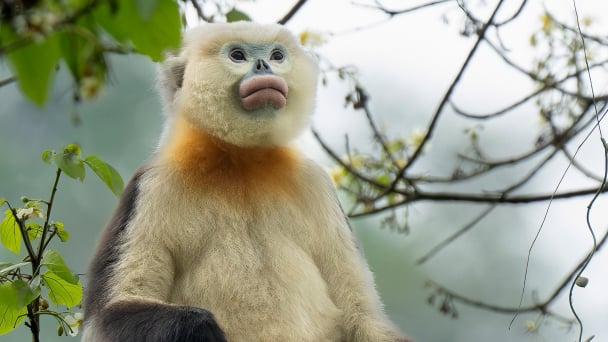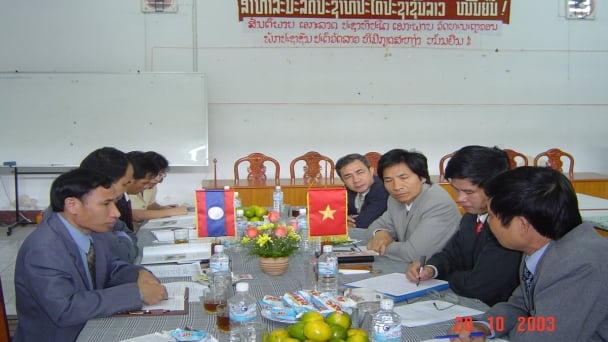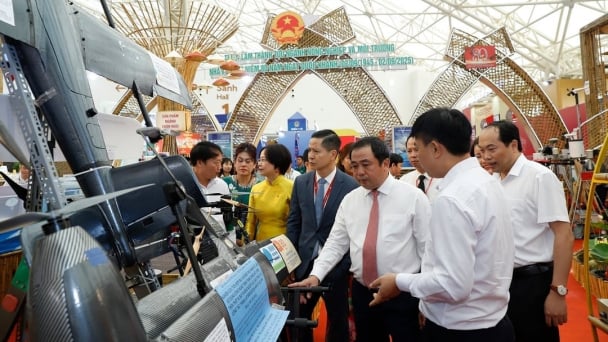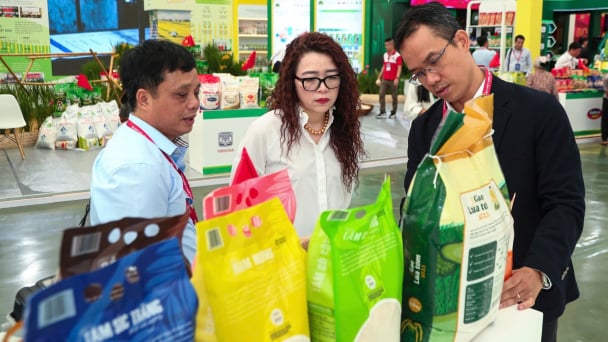September 2, 2025 | 17:17 GMT +7
September 2, 2025 | 17:17 GMT +7
Hotline: 0913.378.918
September 2, 2025 | 17:17 GMT +7
Hotline: 0913.378.918
Lotus plants are being expanded in many localities in our country. Not only bringing high production efficiency, lotus growing is also associated with agricultural eco-tourism.
In order to promptly meet the demand for good varieties for production, the Fruit and Vegetable Research Institute (Vietnam Academy of Agricultural Sciences) has selected many specialized, high-yield, and high-quality lotus varieties.

The white Quan am lotus variety.
- Super lotus variety (Nelumbo nucifera Super lotus): Imported origin. A group of tall tree varieties that grow and develop well. Bowl-shaped flower, with 900 - 1000 petals/flower. Petals are pink and white, stamens are yellow, the flowers are very durable and beautiful. Parts for harvesting include flowers in vases, roots for food, and leaves for tea. Suitable for growing in ponds, lakes, sunken fields or growing in pots as an ornamental plant.
- White Quan am lotus variety (Nelumbo nucifera Quan am Trang): Domestic origin. A group of tall tree varieties that grow and develop well. Bowl-shaped flower style, with 900 - 1000 petals/flower. Blue-white petals, yellow stamens, durable, beautiful flowers. The part for harvesting includes flowers in vases, roots for food, and leaves for tea. Suitable for growing in ponds, lakes, sunken fields, or growing in pots as an ornamental plant.
- Thousand-petal lotus variety (Nelumbo nucifera S1000): Imported origin. A group of tall tree varieties that grow and develop well. The flower style is round, has 900 - 1000 petals/flower, pink petals, durable and beautiful flowers. Parts for harvesting include flowers for use in vases, roots for food, and leaves for tea. Suitable for growing in ponds, lakes, sunken fields, or growing in pots as ornamental plants.

Thousand-petal lotus variety
- Pink lady lotus variety (Lotus Nelumbo nucifera Pink lady): Imported origin. A group of tall tree varieties that grow and develop well. Bowl-shaped flower, with 80 - 150 petals/flower, pale pink petals, blue stamens, durable, and has beautiful flowers. Parts for harvesting include flowers for use in vases, roots for food, and leaves for tea. Suitable for growing in ponds, lakes, sunken fields or growing in pots as ornamental plants.
- Nelumbo nucifera Red Ho Tay lotus variety (Lotus Nelumbo nucifera Red Ho Tay): Domestic origin. A group of tall tree varieties that grow and develop well. Flowers are bowl-shaped, single-petaled, with 100 - 200 petals/flower, red petals, yellow stamens, durable, and has beautiful flowers with strong fragrance. The part for harvesting includes flowers used to marinate tea, put in vases for ornamental purposes or use the flowers for food. Suitable for growing in ponds, lakes, sunken fields or growing in pots as ornamental plants.
- Ba Vi lotus variety (Lotus Nelumbo nucifera Ba Vi): Domestic origin. A group of tall tree varieties that grow and develop well. Flowers are bowl-shaped, single-petaled, have 15 - 25 petals/flower, white pink petals, flowers fade quickly, have many stamens, many and large seeds. This lotus variety is mainly grown for fresh or mature seeds. Suitable for growing in ponds, lakes and sunken fields.

Super lotus variety
The lotus varieties mentioned above have all been successfully produced and demonstrated in Dong Thap province and some other localities in the country.
- Propagation (February - March): Choose old, dry lotus seeds, remove the hard outer shell, soak them in clean water to absorb the water, then nurse them in saturated moist sand, until the seedlings grow strong and has 2 - 3 leaves, of which the largest leaf has a diameter of about 30cm wide, then separate the branches and plant them for production. You can use lotus roots to plant, helping to shorten the growing time.
- Soil: Lotus is a water plant, prefers warm weather and direct sunlight, so you need to choose a field or pond or lake to plant lotus in a well-lit place, the cultivation layer is 20 - 40cm thick, do not choose clay fields, sandy soil and soil contaminated with impurities, fungi, insects, dust and heavy metals.
The soil must be thoroughly ground and create a mud layer 20 - 25cm thick, disinfected, weeds and yellow snails must be picked up, then pumped with water to a depth of 12 - 15cm and then planted.
Planting season in the North is March - April; The South grows during the rainy season; In Dong Thap province alone, planting occurs in December - February or May - July. Planting density is 2,000 - 2,500 trees/ha (plant spacing is 2 - 2.5m; row spacing is 2.5 - 3m).
- Fertilizer (1ha): Apply 10 - 12kg of NPK 16-16-8+13S as base fertilizer and 400 - 500kg of microbial organic fertilizer. First top dressing (15 - 20 days after planting) from 12 - 15kg NPK 16-16-8+13S; 2nd time (35 - 40 days after planting) from 10 - 12kg of NPK 16-16-8+13S; 3rd time (55 - 65 days after planting) from 7 - 9kg NPK 16-16-8+13S; 4th time (75 - 85 days after planting) from 5 - 6kg NPK 16-16-8+13S.
Note, depending on the soil type, variety and growth situation of the lotus plant, adjust the fertilizer dosage to increase or decrease accordingly.
Care: Initially keep the water level in the field 10 - 15cm deep, then gradually raise the water level to 30 - 60cm until the lotus grows stably. In the summer, you need to increase the water level to 0.8 - 1.2m. At the end of the season, you only need to keep the water level 5cm deep. Implement integrated pest management (IPM), paying attention to timely prevention of common pests such as thrips, leafhoppers, aphids, leaf spot disease, anthracnose, tuber rot and stem rot.
Harvest flowers 25 - 27 days after buds begin to bud; Collect old lotus seeds when you see the tops of the seeds appear black and the lotus stems turn pink, sell the leaves for processing when they are still the color of rice cake...
Translated by Bao Ngoc

(VAN) On a demanding journey, we trekked through forests and forded streams in search of the Tonkin snub-nosed monkey, a primate species found only in Vietnam and now teetering on the brink of extinction.

(VAN) The Government issued Resolution No. 261/NQ-CP on August 29, 2025, transferring surplus greenhouse gas emission reductions from the North Central region.

(VAN) Completing databases and implementing digital transformation at the source marks a strategic milestone, affirming a new advancement for Vietnam’s geology and mineral resources sector.

(VAN) Over 80 years of development, Vietnam’s geological sector has achieved numerous milestones, with international cooperation standing out as a driving force that has helped the industry secure its position regionally and globally.

(VAN) Vinod Ahuja, FAO Representative in Viet Nam, affirms that Vietnam's success lies not only in its abundant national reserves but also in increasingly diversified value chains and enhanced competitiveness.

(VAN) Vietnamese engineers have mastered technology, successfully manufacturing an automatic system for environmental agricultural monitoring and measurement, aiming at the dream of 'robotization'.

(VAN) Over the past 80 years, the food sector has walked alongside the nation, from shared jars of rice during the resistance to ships carrying Vietnamese rice brands across the five continents.